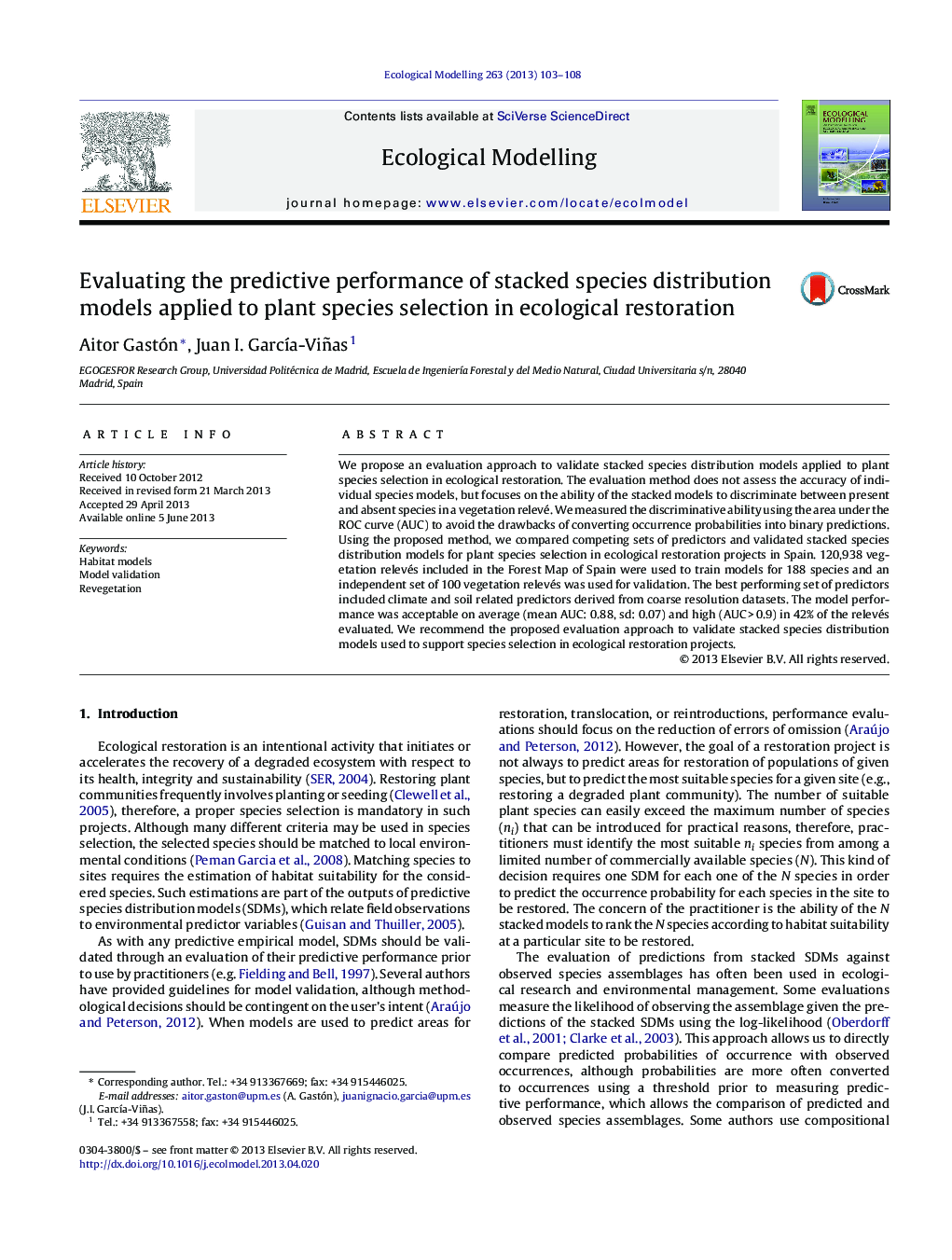| Article ID | Journal | Published Year | Pages | File Type |
|---|---|---|---|---|
| 6297166 | Ecological Modelling | 2013 | 6 Pages |
Abstract
We propose an evaluation approach to validate stacked species distribution models applied to plant species selection in ecological restoration. The evaluation method does not assess the accuracy of individual species models, but focuses on the ability of the stacked models to discriminate between present and absent species in a vegetation relevé. We measured the discriminative ability using the area under the ROC curve (AUC) to avoid the drawbacks of converting occurrence probabilities into binary predictions. Using the proposed method, we compared competing sets of predictors and validated stacked species distribution models for plant species selection in ecological restoration projects in Spain. 120,938 vegetation relevés included in the Forest Map of Spain were used to train models for 188 species and an independent set of 100 vegetation relevés was used for validation. The best performing set of predictors included climate and soil related predictors derived from coarse resolution datasets. The model performance was acceptable on average (mean AUC: 0.88, sd: 0.07) and high (AUCÂ >Â 0.9) in 42% of the relevés evaluated. We recommend the proposed evaluation approach to validate stacked species distribution models used to support species selection in ecological restoration projects.
Related Topics
Life Sciences
Agricultural and Biological Sciences
Ecology, Evolution, Behavior and Systematics
Authors
Aitor Gastón, Juan I. GarcÃa-Viñas,
